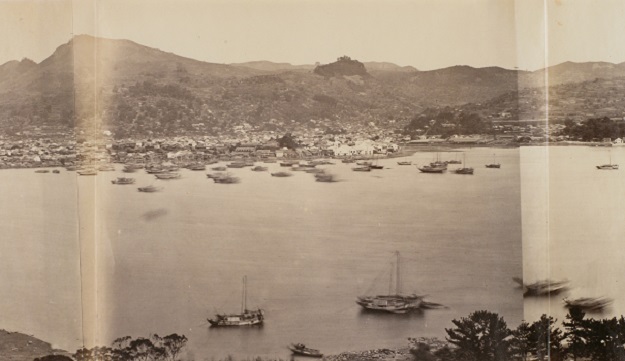
The Prussian East Asian Expedition Photographic Team
Panorama of Nagasaki (partial), 1861, Albumen Print, Collection of Tokyo Photographic Art Museum
Geneses of Photography in Japan: Nagasaki
Mar. 6—May. 6, 2018
- Mar. 6—May. 6, 2018
- Closed : Monday (however open on April 30 [Mon], May 1 [Tue] )
- Admission:Adults ¥ 700/College Students ¥ 600/High School and Junior High School Students, Over 65 ¥ 500
To celebrate the 150th anniversary of the beginning of the Meiji Era, the Tokyo Photographic Art Museum will hold a series of exhibitions based on the earliest Japanese photographs, depicting the birthplaces of Japanese photography and reconstructing a visual account of Japan during the mid-nineteenth century. The first of a series of exhibitions, this year we will present "Geneses of Photography in Japan: Nagasaki".
Approximately 150 years ago, the Edo period came to an end and the Japanese government set about the creation of a Western-style nation. Photography arrived in Japan with the opening of the country’s borders, where it was used to capture this period of transition, passing it down to us today. Pierre Joseph Rossier and Felice Beato were among the foreign photographers who visited Nagasaki, leaving numerous photographs. In addition, there were also the early Japanese photographers, including UENO Hikoma, said to be the founder of Japanese photography, UCHIDA Kuichi, TAKESHITA Keiji, TAMEMASA Torazō, etc., whose works led to the popularization of photography in this country. Photography soon became established in its birthplace, and large numbers of photographs were produced, recording Japan as it moved from a feudal to modern society.
This exhibition, welcoming the expert on Nagasaki Dr. HIMENO Junichi (Professor Emeritus of Nagasaki University) as an advisor, will not be limited to early photographs, but will present also other items connected with the mid-eighteenth century, centered around photographs but also including mounts and album bindings. In addition, it will include maps, paintings, crafts and original works or materials that span the borderlines between genres, such as projections and large-scale maps, reconstructing an image of the Nagasaki of the late Edo and early Meiji periods from a variety of angles.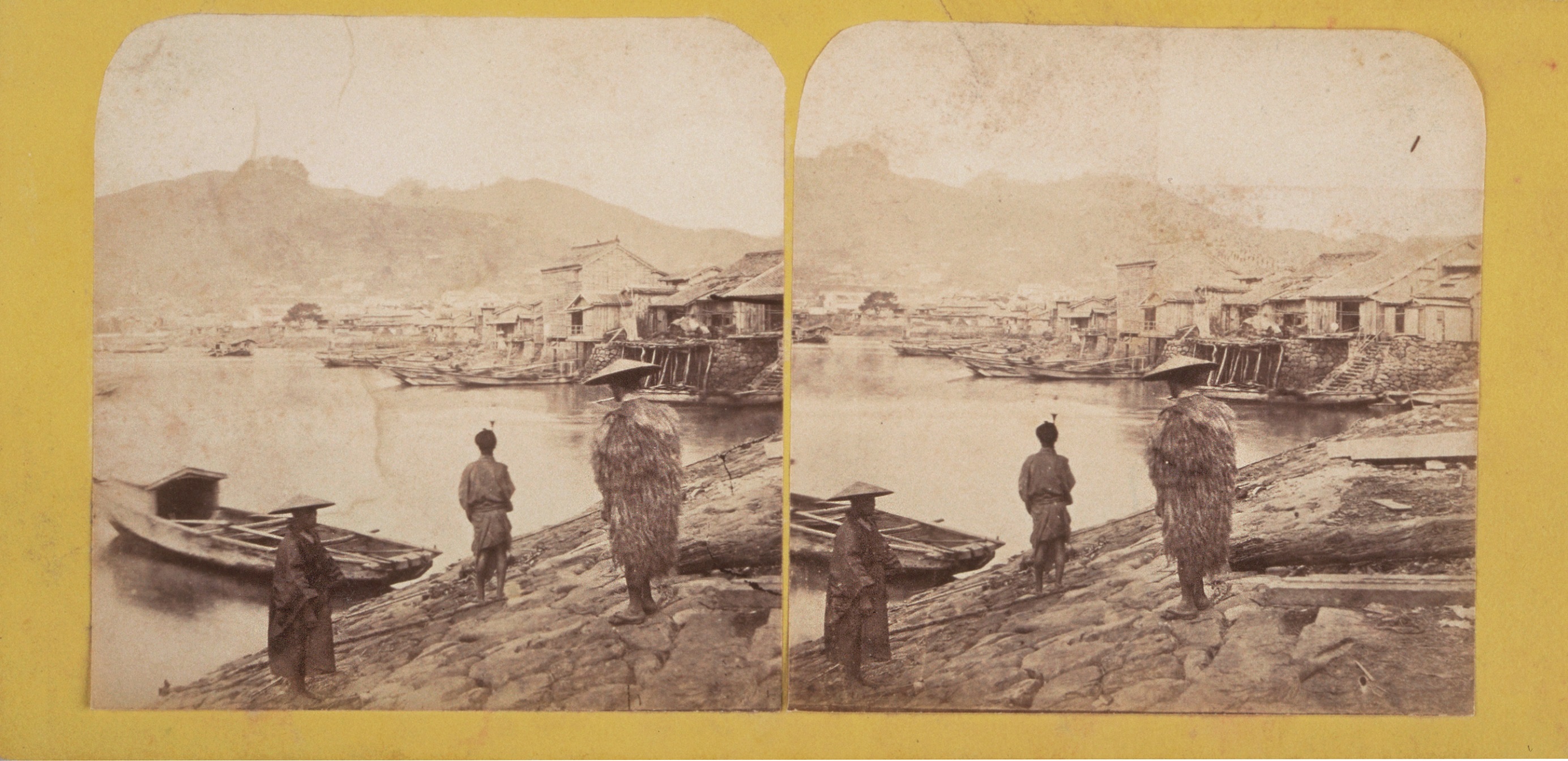
Pierre Joseph Rossier, Japanese rain wear near Dejima, 1860, Albumen Print
Collection of Nagasaki University Library, Central Library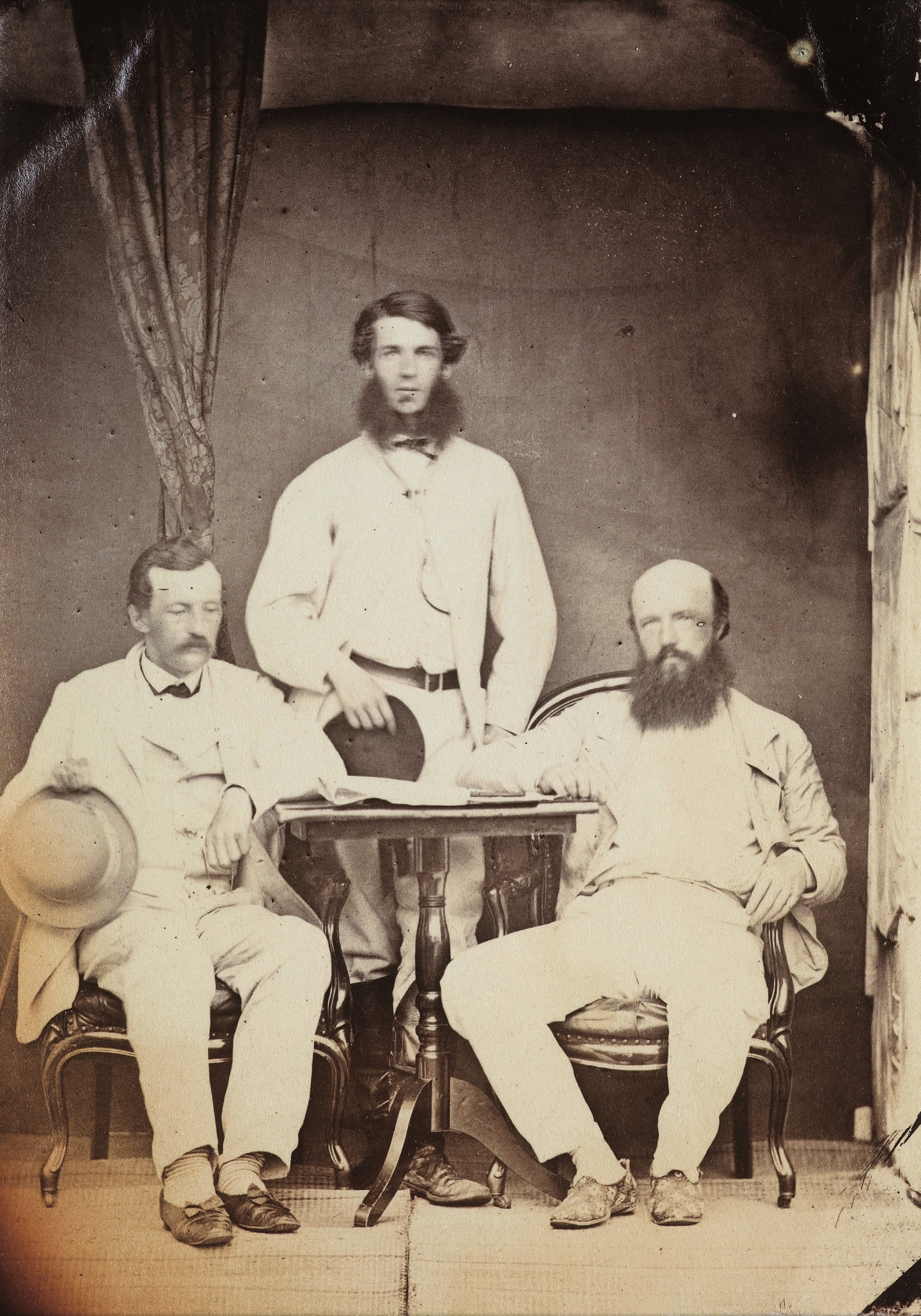
A. F. Bauduin, Bauduin brothers and friend, c.1865, Albumen Print
Collection of Nagasaki University Library, Central Library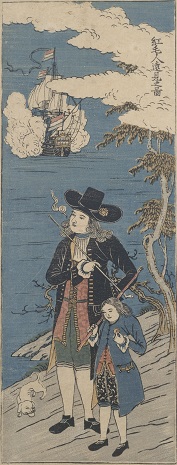
Printer Unknown, Dutchman taking a view, Late Edo Period, Color woodblock print
Collection of Nagasaki Museum of History and Culture
※Exhibit duration March 6- April 8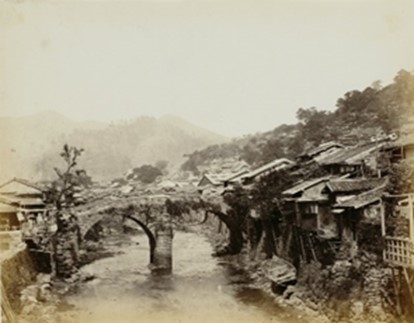
Felice Beato, Stone Bridge at Nagasaki built by the Portuguese A.D.1587(*Not historical fact),
c.1865, Albumen Print , Collection of Tokyo Photographic Art Museum
Featured article in METROPOLIS Magazine. Please click here.
Take pictures of youself in Nagasaki, past and present!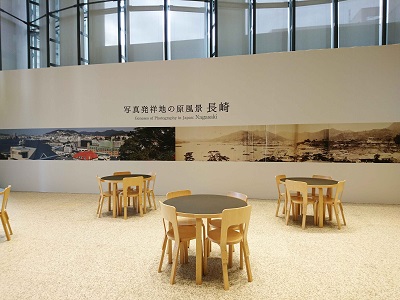
General view of Nagasaki
right) Felice Beato, 1866, Albumen print, Nagasaki University Library - Central Library (Actual size is 213 mm×844 mm)
left) Taken by Isogawa Shoji (February 8, 2018), © Isogawa Shoji
□Sponsored by Lion Corporation, Dai Nippon Printing Co., Ltd., Sompo Japan Nipponkoa Insurance Inc, Nippon Television Network Corporation, the Corporate Membership of Tokyo Photographic Art Museum
□With the cooperation of Nagasaki Prefecture, Nagasaki Prefecture Convention and Tourism Association, Nagasaki City, Nagasaki Museum of History and Culture
□Supported by the Embassy of the Kingdom of the Netherlands
Events
- Gallery Talk in English
-
Mar. 16
(Fri)
14:00~
Apr. 20 (Fri) 18:00~
As a special service for this exhibition, there will be two guided tours of the gallery conducted in English. The lecturer is Alice Gordenker, a writer and researcher in Japanese photographic history, who will provide explanation in English while guiding visitors through the exhibition for about an hour. Free with purchase of regular exhibition admission.


![チラシ1[pdf]](http://topmuseum.jp/upload/4/2961/thums/Nagasaki.png)
![出品作品リスト1[pdf]](http://topmuseum.jp/upload/4/2961/thums/nagasaki.png)